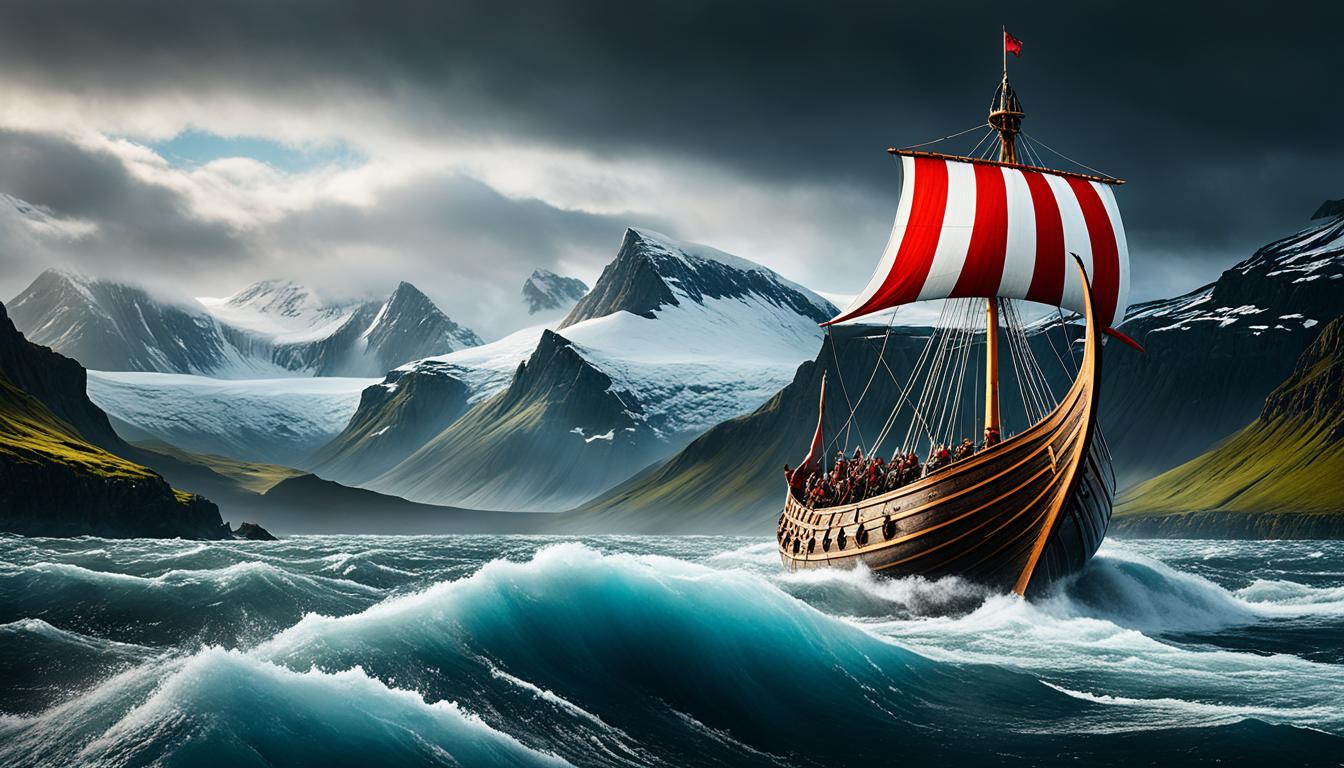Step Back in Time: Explore These Historical Landmarks in Iceland!
Are you ready to learn about Iceland’s fascinating history? It’s a place where fire and ice meet, making a unique scenery. The first Norse settlers arrived in the 9th century1. They founded villages that eventually became a thriving country. In 930 AD, Iceland started the Althing, one of the world’s oldest parliaments1.
Travelers can visit Iceland’s historical spots and feel like they’ve traveled back in time. Places like Þingvellir National Park show where two continents meet2. The Hallgrímskirkja church, standing at 74 meters high, is also a must-see2. These places give us a peek into Iceland’s past.
Places like Reykjavík and Siglufjörður help us understand Iceland’s history up close3. Reykjavík is the heart of the country, full of culture. Siglufjörður is the northernmost town, where you can see the past come alive. This journey will show how Vikings, whalers, and brave pioneers shaped Iceland.
Key Takeaways
- Iceland’s rich history dates back to the 9th century, with the first permanent Norse settlements and the establishment of the world’s oldest functioning parliament, the Althing, in 930 AD.
- Explore iconic historical landmarks like Þingvellir National Park, Hallgrímskirkja church, and the quaint town of Siglufjörður, each offering a unique glimpse into Iceland’s captivating past.
- Discover the remnants of a bygone era, like Viking sites and whaling heritage, and delve into the country’s cultural legacy.
- Uncover the diverse stories and traditions that have defined Iceland over the centuries, from its striking landscapes to its resilient people.
- Embark on a journey through time and unlock the secrets of Iceland’s fascinating history, leaving you with a deep appreciation for this remarkable land.
Iceland’s Storied Past: A Brief History
The history of Iceland is an exciting mix of Viking stories, early towns, and a strong love for freedom4. In the 9th century, Norse people first settled on this island. Its place between Europe and North America meant it was key for traveling and trading5.
In 930 AD, Iceland’s Vikings started the world’s first parliament, the Althing. It was all about free choice and owning land4. This group helped set the country’s laws and cultural ways for ages5.
Icelanders keep close to their old Norse ways, telling stories and myths that became written tales4. Viking ideas and laws stayed with Iceland for a long time, affecting its language and customs4.
Though others ruled over time, like Norway’s king in 1262 and then Denmark from 1397, Iceland stayed true. The wish for self-rule started in the early 1800s. In 1944, they broke free from Denmark, creating the Iceland we know today5.
Modern Iceland honors its Viking past. People still speak the old Norse tongue and feel a close bond with their history4. Its story of staying strong, valuing freedom, and having a clear sense of self keeps drawing people in from the whole world45.
Historical landmarks in Iceland

Iceland is full of history and amazing sights. It has Thingvellir National Park where the first parliament met in 930 AD. You can also see the famous Gullfoss Waterfall, important for protecting Iceland’s nature6.
The Geysir Geothermal Area shows how Iceland’s land was made by volcanoes. The Snæfellsnes Peninsula is like a small version of Iceland, full of tales and beauty. The stunning Jokulsarlon Glacier Lagoon lets you watch a glacier make icebergs7.
In the north, Akureyri stands out as the main town. It has a historic area that feels like a step into the past. There are also less known spots like the Raufarhólshellir Lava Cave and churches that show a different side of Iceland’s history6.
Across Iceland, you can find natural wonders and man-made beauty. They tell stories of a place with a colorful past. This invites people to learn and enjoy the land’s history7.
The Arctic Henge in Raufarhöfn is unique. This stone circle is about honoring nature. It has tall posts that light up in different colors when the sun shines8.
At the Arctic Henge, you can walk by a path with dwarf statues. You can also sit on a special seat for a photo. Plus, there’s a place for special ceremonies, like weddings8.
If you love big views or small, secret spots, Iceland has something for you. Its historic places let you travel back in time and see the beauty of today678.
Conclusion
Iceland is a wonderland mix of history and stunning scenery9. It has tales from ancient Viking times and stories of elves and trolls9. Every spot on this island has a unique history9. We learn about time’s passing and the strong will of Icelandic people as we explore9.
Local and global efforts support keeping Iceland’s UNESCO World Heritage Sites alive10. By picking green ways to travel and staying in eco-friendly places, we help10. Being a good tourist, who buys from locals and respects their ways, protects Iceland’s nature and culture10.
Get ready, grab your bags, and travel in this unique land of volcanoes and glaciers9. Enjoy your adventure through time in Iceland. Safe journey!







